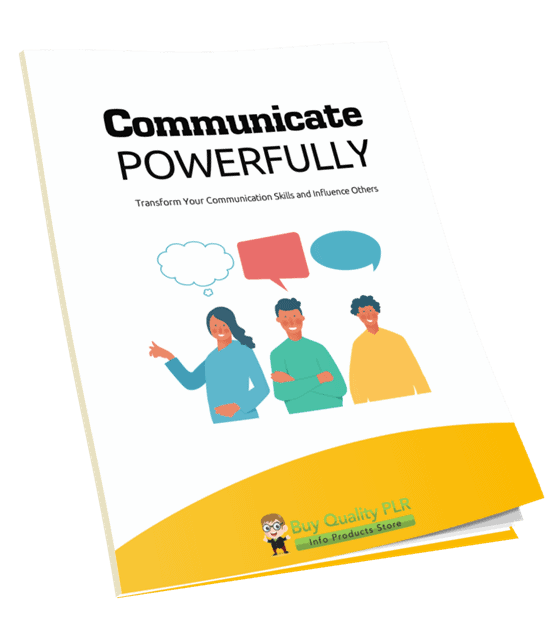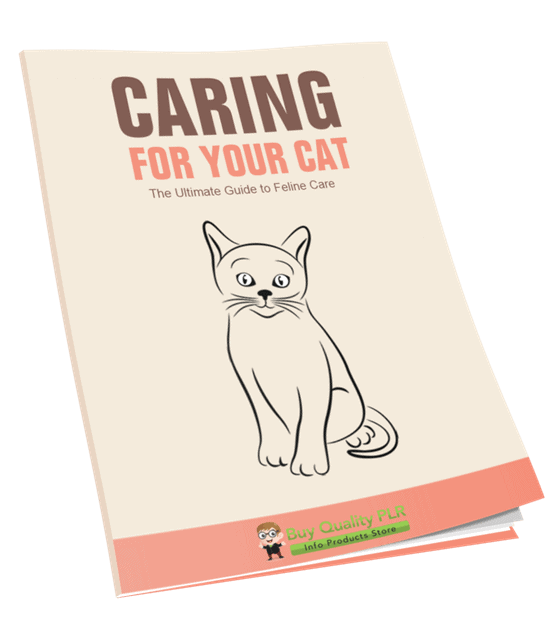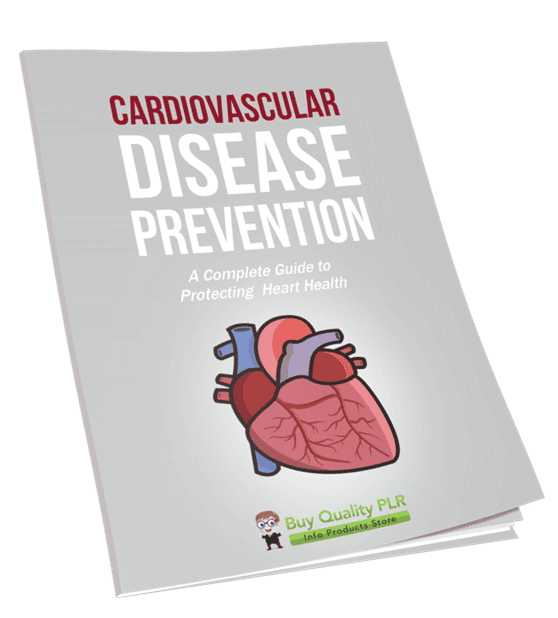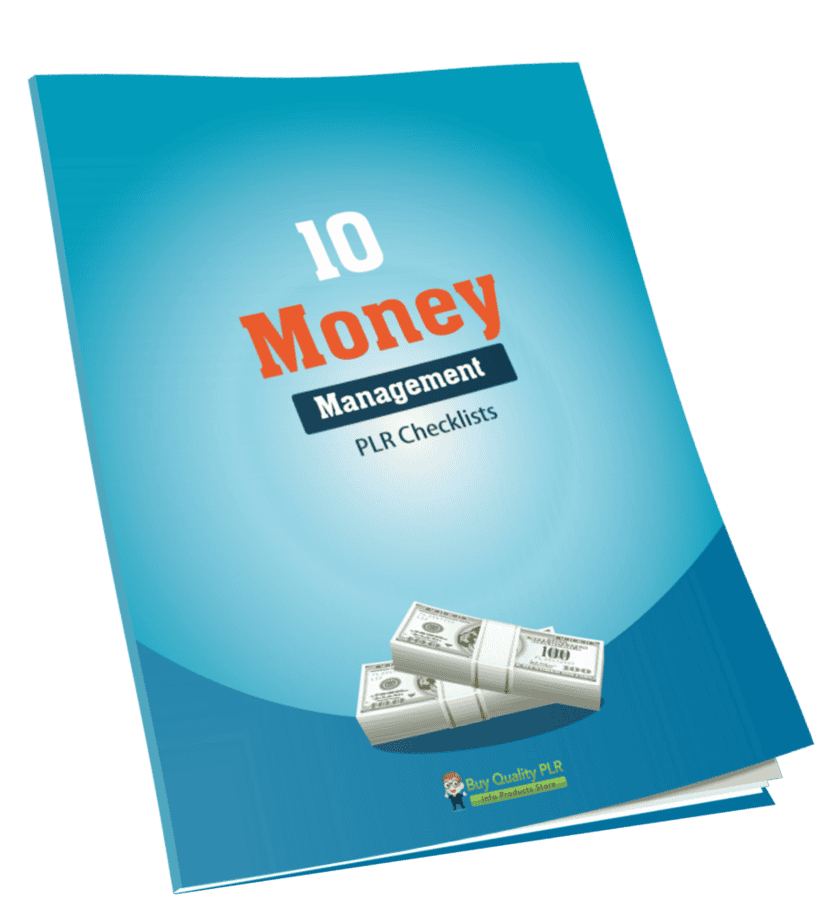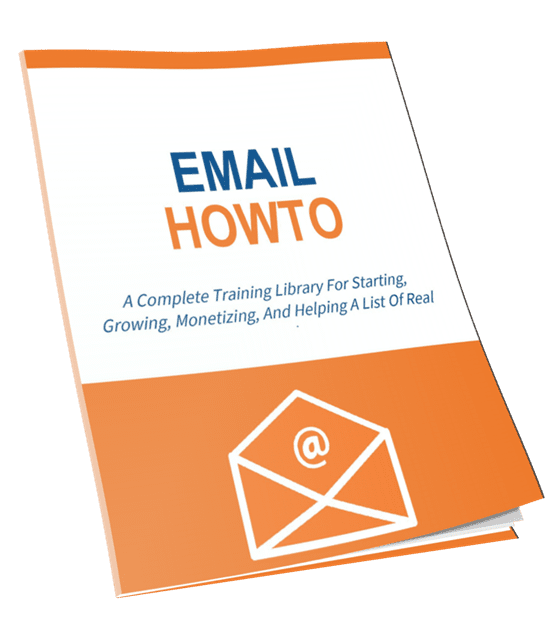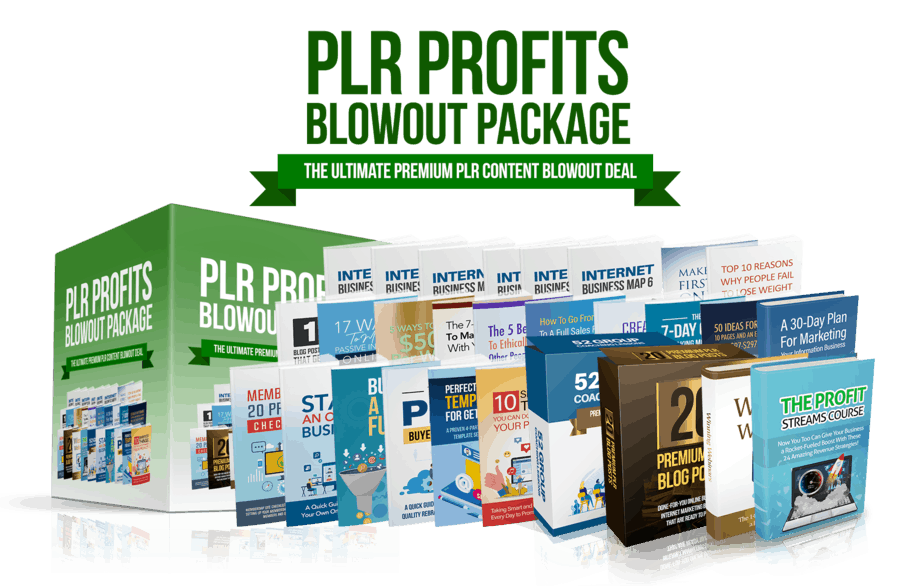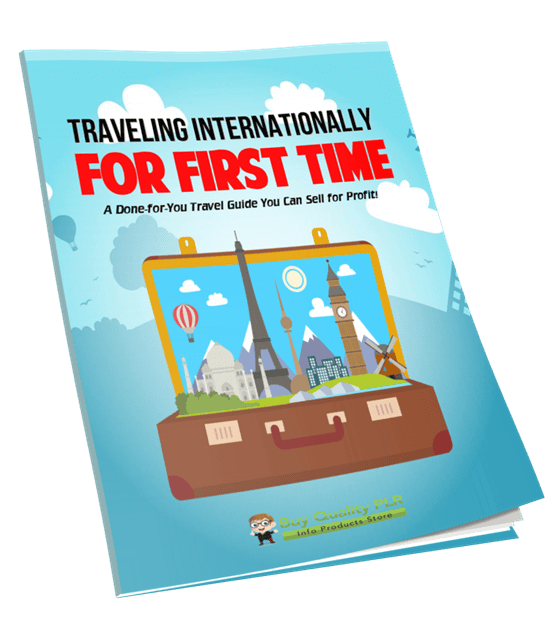
Traveling Internationally For First Time PLR Course 25k Words
in PLR Checklists , PLR eBooks , PLR eCourses , PLR List Building Reports , Premium PLR , Premium PLR eBooks , Premium PLR Reports , Premium White Label Brandable PLR Coaching Courses , Private Label Rights Products , Travel PLR , Travel PLR eBooksChoose Your Desired Option(s)
has been added to your cart!
have been added to your cart!
#travelplr #internationaltravel #firsttimetravel #plrcourse #travelguides #traveltips
Traveling Internationally for the First Time PLR Course
A Done-for-You Travel Guide You Can Sell for Profit!
Are you looking for a high-demand PLR product that sells effortlessly? The Traveling Internationally for the First Time PLR Course is a ready-to-sell digital product designed for new travelers who want expert guidance on their first overseas adventure.
With international travel booming, first-time travelers are searching for step-by-step guidance to help them navigate their journey with confidence. This course is packed with practical tips, essential travel advice, and easy-to-follow checklists—all professionally written and ready for you to brand, market, and sell as your own.
Presenting…
Traveling Internationally For First Time PLR Course 25k Words
Why This PLR Course is a Profitable Investment?
✔ Evergreen & High-Demand Niche – The global travel industry is worth over $10 trillion, and millions of people travel internationally for the first time each year.
✔ Done-for-You Content – Skip the writing, research, and design—this complete training course is ready for you to customize and sell immediately.
✔ Multiple Monetization Options – Turn this into a paid online course, eBook, membership program, or digital coaching offer.
✔ No Experience Needed – You don’t need to be a travel expert—just rebrand the content and position yourself as an authority in the travel niche.
✔ Instant Access & Easy to Use – Download, edit, and start selling right away. It’s plug-and-play content for your business.
What’s Inside the Traveling Internationally for the First Time PLR Course?
Module 1: Planning Your Trip
A successful trip starts with solid preparation. This module helps first-time travelers plan everything from budgeting to booking accommodations.
- Choosing the Right Destination – Selecting the perfect travel spot based on budget, interests, and safety.
- Setting a Realistic Budget – Estimating flight costs, accommodation, meals, activities, and travel insurance.
- Understanding Visa & Entry Requirements – How to check visa rules, vaccination needs, and travel advisories.
- Booking Flights & Accommodation – Using price comparison sites and finding safe, budget-friendly lodging.
Module 2: Packing Smart for International Travel
Avoid overpacking or forgetting important items—this module covers all the essentials.
- Creating a Smart Packing List – The must-have items every traveler needs.
- Dressing for Different Climates – Packing according to the weather and cultural expectations.
- Organizing Important Documents – Keeping passports, visas, and travel insurance safe and accessible.
- Maximizing Luggage Space – Packing hacks to save space and keep belongings organized.
Module 3: Navigating Airports & Immigration
For first-time travelers, airports and customs can be overwhelming. This module walks them through the process step by step.
- Checking in for Your Flight – How to check in online and choose the best seats.
- Getting Through Security & Customs – Understanding security rules and what to expect at immigration.
- Handling Layovers & Connecting Flights – Managing time between flights and rechecking luggage.
- Keeping Essential Documents Accessible – Why keeping travel documents handy saves time and stress.
Module 4: Arriving & Navigating Your Destination
Once travelers land, they need to find their way, stay connected, and explore confidently.
- Getting a Local SIM Card or Wi-Fi Plan – Staying connected affordably while traveling.
- Using Public Transportation – How to navigate local buses, trains, taxis, and rideshares.
- Basic Local Language Tips – Simple phrases that help travelers communicate effectively.
- Keeping an Emergency Contact List – What numbers to have saved in case of emergencies.
Module 5: Staying Safe & Enjoying the Trip
This module teaches safety, cultural awareness, and maximizing the travel experience.
- Avoiding Scams & Staying Safe – Common travel scams and how to prevent them.
- Respecting Local Customs & Traditions – Adapting to different cultures and avoiding offense.
- Trying New Experiences & Making Connections – Making the most of the trip through socializing and exploring.
- Returning Home & Post-Trip Reflections – Repacking, adjusting back to normal life, and planning the next adventure.
How You Can Profit from This PLR Course
💰 Sell It as a Digital Course – Offer this as a self-paced training program for new travelers.
💰 Turn It into an eBook or PDF Guide – Create a downloadable travel handbook.
💰 Bundle It with Travel-Related Products – Sell it alongside travel planners, packing lists, or destination guides.
💰 Offer It as a Travel Coaching Program – Use the course to coach first-time travelers.
💰 Add It to a Membership Site – Provide exclusive content for travel bloggers, agencies, or adventurers.
💰 Use It for Lead Generation – Offer a free chapter or checklist to grow your email list and upsell premium travel products.
What’s Included in Your Traveling Internationally for the First Time PLR Package?
✅ Comprehensive Course Content (22,473 Words) – A detailed, step-by-step travel guide ready to sell.
✅ Essential Travel Checklist (640 Words) – A must-have resource for travelers to stay organized.
✅ Frequently Asked Questions (1,292 Words) – Addressing common concerns of first-time international travelers.
✅ High-Converting Sales Page (819 Words) – Copy-and-paste content to start selling instantly.
Why This PLR Course is a Smart Investment
🚀 High-Demand & Profitable Niche – The travel industry is booming, and first-time travelers need expert guidance.
🚀 No Content Creation Required – Save hours of research and writing—just rebrand and launch.
🚀 Multiple Monetization Strategies – Sell as a course, eBook, coaching program, or bundle.
🚀 Beginner-Friendly & Easy to Sell – Whether you’re a travel blogger, entrepreneur, or coach, this PLR course fits seamlessly into your business.
🚀 Instant Download, Instant Profits – Download today, customize, and start selling within 24 hours!
Start Selling This Course & Tap into the Travel Industry Today!
The Traveling Internationally for the First Time PLR Course is the perfect solution for those looking to enter the lucrative travel niche without spending time creating content from scratch.
With expert insights, practical advice, and multiple monetization strategies, this course gives you everything you need to help first-time travelers and build a profitable business.
🎯 Rebrand. Sell. Profit. It’s that easy!
👉 Get Instant Access & Start Selling Today!
has been added to your cart!
have been added to your cart!
Here A Sample of Traveling Internationally For First TimePLR Course
Welcome to “Traveling Internationally for the First Time”! Whether you’re planning your first overseas adventure or just feeling a bit overwhelmed, this course will guide you step by step to ensure a smooth and exciting journey. Ready to dive in? Let’s get started!
Module 1: Planning Your Trip
Step 1: Choose Your Destination 🌍✈️
Choosing your destination is one of the most exciting parts of planning your international journey. It’s the foundation of your travel experience, so let’s break it down into clear, actionable steps to help you make the best choice.
1. Reflect on Your Interests and Travel Goals 🧳
Start by thinking about what excites you and aligns with your personal preferences. This is your opportunity to dream big and imagine the kind of experiences you want to have. Ask yourself:
- What environments inspire me? Do you long for the serenity of beaches 🏖️, the adventure of mountains, or the charm of historical cities
- What type of activities do I enjoy? Are you into outdoor adventures, cultural exploration, shopping, or culinary experiences?
- What do I want to achieve on this trip? Is it relaxation, adventure, personal growth, or ticking a bucket list item off?
Visualizing your ideal trip will help you narrow down the type of destination that fits your vibe.
2. Research Potential Destinations
Once you have a general idea of what excites you, it’s time to research potential destinations. Use the following resources for inspiration:
- Travel Websites: Explore platforms like Lonely Planet 🌐, National Geographic Travel 🌏, or TripAdvisor 🛎️ for detailed guides and top destinations.
- Travel Blogs and Vlogs: Blogs and YouTube channels provide firsthand insights and tips from real travelers. Look for videos with titles like “Top Destinations for First-Time International Travelers”.
- Social Media Platforms: Browse Instagram 📸 or Pinterest 📌 using hashtags like #TravelGoals, #BeachParadise, or #MountainEscape to discover beautiful locations.
- Travel Forums: Websites like Reddit’s r/travel or online communities specific to your country offer discussions on destinations suited to different interests.
Create a list of potential destinations that catch your attention, and note down key details like activities, best travel seasons, and unique attractions.
3. Match Your Destination with Your Budget 💸💡
Travel is thrilling, but it also needs to align with your financial goals. Follow these steps to assess affordability:
- Estimate Costs: Research the average costs for flights, accommodations, food, and activities for each destination. Websites like Skyscanner ✈️, Booking.com 🛌, and Numbeo 💹 can help with cost breakdowns.
- Exchange Rates and Currency: Consider how far your money will go. For example, Southeast Asia 🌴 may offer luxury experiences at a lower cost, while Western Europe 💶 might be more expensive.
- Hidden Expenses: Factor in additional costs like visas 🛂, travel insurance, and transportation within the destination.
Create a shortlist of destinations that excite you and fit comfortably within your budget.
4. Consider Practical Factors
Beyond personal interests and budgets, think about practical elements that may influence your choice:
- Language: While many destinations cater to English speakers 🇬🇧, it’s helpful to consider how comfortable you’ll be navigating language barriers.
- Seasonality: Research the weather 🌦️ and peak tourist seasons 🌞 for each destination. For example, visiting Europe in summer means vibrant streets, but it might also mean larger crowds.
- Safety and Accessibility: Check travel advisories 🛡️ and safety ratings for potential destinations. Websites like the U.S. Department of State or your country’s equivalent provide up-to-date travel alerts.
- Cultural Fit: Are you open to experiencing cultures vastly different from your own, or do you prefer a destination with some familiar comforts?
5. Finalize Your Destination Choice 🎯✍️
By now, you’ve explored options, assessed costs, and considered practicalities. Review your shortlist and ask yourself:
- Does this destination excite me?
- Does it match my budget?
- Is it realistic for my first international trip?
Once you’re confident, mark your chosen destination with a big ✔️ and start imagining the incredible adventure ahead!
💡 Pro Tip: If you’re still unsure, consider consulting a travel agent 🧳, who can offer tailored advice and help you make your final decision.
Remember, this is your adventure. Choosing your destination is about finding a place that resonates with your interests, meets your needs, and fuels your excitement for international travel. Happy planning!
Step 2: Set a Travel Budget
Setting a travel budget is crucial to ensure your international trip is financially manageable and enjoyable. Budgeting allows you to prioritize your spending, avoid unnecessary stress, and prepare for any unexpected costs. Here’s a detailed, step-by-step guide to creating a realistic travel budget:
1. Understand Your Total Budget
Start by assessing your overall financial situation and determining how much you can comfortably allocate for the trip.
- Evaluate Your Savings: Look at your savings and decide what portion you’re willing to dedicate to travel without compromising other financial responsibilities.
- Set a Limit: Be clear about your maximum budget, including all expenses from planning to return.
- Decide on Payment Methods: Determine whether you’ll use savings, credit cards, or a combination. If using credit, factor in repayment plans to avoid financial strain.
Knowing your total budget provides a clear framework for planning your trip.
2. Break Down Major Expenses
Once you’ve established your budget, divide it into categories to ensure no aspect of your trip is overlooked. Common categories include:
- Flights: Research average airfare costs using tools like Google Flights, Skyscanner, or Kayak. Prices vary depending on the destination, time of year, and booking time.
- Accommodation: Decide whether you prefer hotels, hostels, vacation rentals, or other options. Platforms like Booking.com or Airbnb offer price comparisons. Include taxes and fees in your calculations.
- Food and Drinks: Estimate daily meal costs based on your destination. Fine dining and street food markets vary significantly in price, so adjust based on your preferences.
- Activities and Attractions: Research the cost of sightseeing, tours, or special activities. For example, visiting iconic landmarks, museums, or theme parks often involves entry fees.
- Local Transportation: Account for expenses like public transport, taxis, or car rentals. Remember to include fuel, parking, or toll fees if renting a car.
Breaking down these expenses ensures you allocate funds accurately to each part of your trip.
3. Plan for Hidden and Unexpected Costs
Unexpected expenses can arise during travel, so it’s essential to prepare:
- Travel Insurance: Always include the cost of comprehensive travel insurance that covers medical emergencies, cancellations, and lost luggage.
- Visa Fees: Research visa requirements for your destination and factor in application costs. Some countries also have entry or departure fees.
- Tips and Gratuities: Understand the tipping culture of your destination and include this in your daily expense estimates.
- Emergency Fund: Set aside a portion of your budget for unforeseen circumstances like sudden itinerary changes, additional luggage fees, or medical needs.
Allocating funds for these potential expenses ensures peace of mind while traveling.
4. Optimize Your Budget
After estimating costs, look for ways to save and make your budget more efficient:
- Travel Deals: Look for discounts on flights, accommodations, and activities. Subscribe to newsletters or use price comparison tools.
- Travel Off-Season: Avoid peak tourist times to benefit from lower costs for flights and accommodations.
- Meal Strategies: Opt for accommodations that include breakfast, eat at local markets, or prepare your meals if staying in a rental with a kitchen.
- Flexible Itineraries: Be open to alternative routes or layovers that may reduce airfare costs.
Optimization helps you stay within budget while still enjoying a fulfilling travel experience.
5. Document Your Budget Plan
Create a detailed budget document to track and manage your expenses effectively:
- Use Tools or Apps: Platforms like Excel, Google Sheets, or budgeting apps like Trail Wallet or TripCoin are excellent for recording expenses.
- Categorize Expenses: Separate costs into pre-trip (flights, insurance, visas) and on-trip (food, activities, transportation).
- Set Spending Limits: Assign daily spending limits to avoid overspending.
- Monitor Your Spending: Regularly check your budget during your trip to ensure you’re staying on track.
Having a well-organized plan keeps your finances in check and prevents last-minute surprises.
By setting a travel budget step by step, you’ll feel confident and prepared for your international trip. A thoughtful budget isn’t just about controlling costs—it’s about ensuring your journey is stress-free and enjoyable. This preparation sets the stage for a memorable and financially secure adventure.
Step 3: Research Entry Requirements
Understanding the entry requirements for your chosen destination is a critical part of preparing for international travel. Each country has its own set of regulations, and missing even one essential document or requirement could disrupt your plans. Here’s a step-by-step guide to ensure you’re well-prepared to meet all entry requirements:
1. Verify Passport Validity
Your passport is your primary identification when traveling internationally, and it must meet the requirements of your destination:
- Check Expiration Date: Many countries require your passport to be valid for at least six months beyond your travel dates. Verify this to avoid issues at immigration.
- Pages for Stamps: Ensure your passport has enough blank pages for entry and exit stamps. Some countries require a minimum of two blank pages.
- Damaged Passports: If your passport is damaged, renew it before traveling. Some countries may refuse entry if the passport is not in good condition.
If you need to renew your passport, do so early, as processing times can vary by country.
2. Determine Visa Requirements
Visas are official permissions that allow you to enter a country for a specified purpose and duration. Follow these steps to check if you need one:
- Research Visa Policies: Visit the embassy or consulate website of your destination country to learn about visa requirements for citizens of your home country.
- Identify the Visa Type: Determine the type of visa you need (e.g., tourist, business, student). The requirements vary based on the purpose of your visit.
- Application Process: Understand whether you need to apply in advance or if a visa is available on arrival. Some countries offer electronic visas (eVisas) for added convenience.
- Fees and Processing Time: Note the cost of the visa and the time required for processing. Plan accordingly to ensure you receive your visa before your departure date.
Gather all necessary documents, such as proof of accommodation, return flight tickets, and financial proof, as they may be required during the visa application process.
3. Check Vaccination and Health Requirements
Health-related entry requirements ensure travelers are protected against certain diseases and do not pose a risk to others. Research these requirements thoroughly:
- Vaccination Certificates: Some destinations require proof of specific vaccinations, such as yellow fever or COVID-19. Check if you need an International Certificate of Vaccination or Prophylaxis (ICVP).
- Health Advisories: Visit trusted health organizations like the Centers for Disease Control and Prevention (CDC) or the World Health Organization (WHO) to learn about recommended vaccines for your destination.
- Testing Requirements: Some countries may require a negative COVID-19 test or other health screenings before entry.
- Health Insurance: Verify if your travel insurance includes coverage for medical expenses abroad, as some countries require proof of insurance for entry.
Book necessary vaccinations or tests well in advance, as some require multiple doses or specific timing before travel.
4. Review Additional Entry Documents
Certain destinations may require additional documentation beyond your passport and visa. Common examples include:
- Proof of Accommodation: Some countries ask for confirmation of where you will be staying during your trip (hotel booking, rental agreement, or host invitation).
- Return or Onward Ticket: Immigration officers often check for proof of return to your home country or onward travel to another destination.
- Proof of Sufficient Funds: Be prepared to show evidence of financial stability, such as recent bank statements, to ensure you can support yourself during your stay.
- Customs and Import Declarations: If you’re traveling with large amounts of cash or specific goods, research customs regulations to avoid issues at entry points.
Compile all required documents in a folder or digital format to ensure easy access during your journey.
5. Use Reliable Sources for Information
Accurate and up-to-date information is essential for meeting entry requirements. Use the following trusted resources:
- Government Websites: Embassy or consulate websites of your destination country provide official guidelines on entry requirements.
- Tourism Boards: Check the official tourism websites of your destination for additional travel advice and updates.
- Travel Advisories: Monitor travel advisories issued by your home country’s government for safety and health information.
- Airline Requirements: Airlines often verify your documents before boarding. Check with your airline to ensure you meet their travel policies.
Cross-reference multiple sources to confirm the accuracy of your information, especially if entry requirements are subject to change.
Researching entry requirements is a meticulous but necessary step to ensure a smooth travel experience. By addressing these requirements early, you’ll avoid last-minute complications and feel confident that your trip is off to a great start. Keep all your documents organized and readily available for a hassle-free entry process.
Step 4: Book Your Flights and Accommodation
Booking flights and accommodations is one of the most exciting parts of planning your international trip. This step involves finding the best deals and ensuring that your choices align with your preferences and budget. Below is a detailed, step-by-step guide to help you navigate the booking process effectively.
1. Find the Best Flights for Your Destination
Flights often represent a significant portion of your travel expenses, so securing a good deal is important. Follow these steps:
- Use Flight Comparison Websites: Platforms like Google Flights, Skyscanner, Kayak, or Momondo allow you to compare prices across multiple airlines and routes. These tools show flexible dates, nearby airports, and price trends to help you make informed decisions.
- Book Early: Start your search 2–6 months before your travel dates to access the best deals, especially if you’re traveling during peak seasons or holidays.
- Set Price Alerts: Many flight comparison websites allow you to set alerts. You’ll receive notifications when prices drop for your selected route.
- Consider Layovers: Flights with layovers are often cheaper than direct flights. Decide whether you’re open to a layover and factor in the additional travel time.
- Understand Baggage Policies: Airlines have different baggage rules. Review the policies for checked and carry-on luggage to avoid unexpected fees.
When you’ve found the best flight, double-check the details (dates, times, and layover durations) before confirming your booking.
2. Choose Your Accommodation Type
Your choice of accommodation can greatly influence your travel experience. Here’s how to make the best decision:
- Define Your Preferences: Decide whether you prioritize comfort, location, social interaction, or affordability. Hotels, Airbnbs, and hostels cater to different needs:
- Hotels: Offer privacy, amenities like room service, and often have central locations. Ideal for travelers seeking convenience and luxury.
- Airbnb/Vacation Rentals: Provide more space, local experiences, and self-catering options. Great for families or groups.
- Hostels: Offer budget-friendly options and opportunities to meet other travelers. Ideal for solo travelers and backpackers.
- Hotels: Offer privacy, amenities like room service, and often have central locations. Ideal for travelers seeking convenience and luxury.
- Research Locations: Choose accommodations close to major attractions, public transport, or areas that align with your itinerary. Consider safety, especially if traveling alone.
- Read Reviews: Websites like Booking.com, Agoda, or Airbnb provide customer reviews and ratings. Read recent reviews to ensure the property meets your expectations.
- Compare Amenities and Costs: Check what’s included in the price—Wi-Fi, breakfast, parking, or airport transfers—and factor these into your decision.
Shortlist a few options before finalizing to ensure you’ve considered all possibilities.
3. Time Your Booking Strategically
Timing is crucial when booking both flights and accommodations. Here’s how to approach it:
- For Flights:
- Advance Booking: Book international flights early, especially for popular destinations. Prices typically increase as the departure date approaches.
- Off-Peak Days: Flights are often cheaper on Tuesdays and Wednesdays compared to weekends.
- Flexible Dates: If your travel dates are flexible, you can take advantage of lower fares during less busy times.
- Advance Booking: Book international flights early, especially for popular destinations. Prices typically increase as the departure date approaches.
- For Accommodation:
- Secure Key Properties: Book accommodations early if you’re visiting during festivals, holidays, or peak tourist seasons.
- Last-Minute Deals: For less busy periods, some hotels and Airbnbs offer discounts closer to the date. Use apps or platforms specializing in last-minute bookings.
- Secure Key Properties: Book accommodations early if you’re visiting during festivals, holidays, or peak tourist seasons.
Be mindful of cancellation policies for both flights and accommodations in case your plans change.
4. Confirm Your Booking Details
Once you’ve selected your flights and accommodations, ensure all the details are accurate before finalizing:
- Review Flight Itinerary: Double-check the flight dates, times, departure/arrival airports, and layover durations. Verify the airline’s policies regarding cancellations, changes, and refunds.
- Confirm Accommodation Booking: Verify the check-in and check-out dates, address, contact information, and included amenities. Contact the host or hotel for any special requests or clarifications.
- Save Confirmation Details: Store your booking confirmations, receipts, and itineraries digitally (in apps like Google Drive or TripIt) and as hard copies for easy access during your trip.
Having all your travel details in one place reduces stress and ensures a smoother journey.
5. Plan for Arrival
After booking your flights and accommodations, consider your arrival experience:
- Airport Transfers: Research how to get from the airport to your accommodation—options may include public transport, taxis, or pre-arranged shuttles.
- Early/Late Check-Ins: If your flight arrives outside standard check-in hours, confirm if early or late check-in is possible, or plan where you can store your luggage.
- Neighborhood Familiarization: Look up nearby amenities like grocery stores, restaurants, and public transportation options to make your arrival easier.
By planning for your arrival, you can transition smoothly from the airport to your accommodation.
Booking your flights and accommodation is a major milestone in your international travel journey. With thorough research, strategic timing, and careful confirmation, you’ll lay the foundation for a comfortable and stress-free trip. Whether you’re flying to a bustling city or relaxing on a quiet beach, these steps will help you secure the best deals and create a seamless travel experience.
We’re also giving these extra bonuses
Traveling Internationally For First Time – Checklist

Traveling Internationally For First Time – FAQs

Traveling Internationally For First Time – Salespage Content
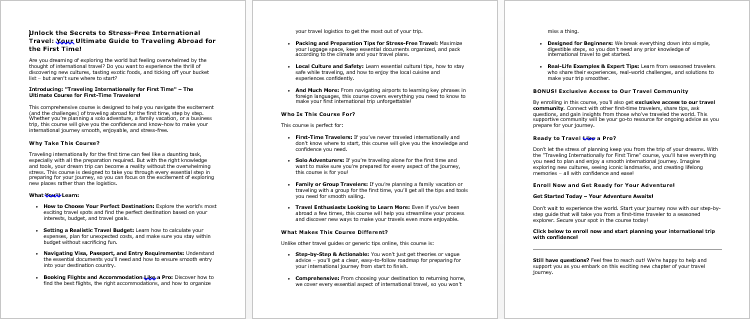
Package Details:
Word Count: 22 473 Words
Number of Pages: 88
Traveling Internationally For First Time – Bonus Content
Checklist
Word Count: 640 words
FAQs
Word Count: 1292 words
Salespage Content
Word Count: 819 words
Total Word Count: 25 224 Words
Your PLR License Terms
PERMISSIONS: What Can You Do With These Materials?
Sell the content basically as it is (with some minor tweaks to make it “yours”).
If you are going to claim copyright to anything created with this content, then you must substantially change at 75% of the content to distinguish yourself from other licensees.
Break up the content into small portions to sell as individual reports for $10-$20 each.
Bundle the content with other existing content to create larger products for $47-$97 each.
Setup your own membership site with the content and generate monthly residual payments!
Take the content and convert it into a multiple-week “eclass” that you charge $297-$497 to access!
Use the content to create a “physical” product that you sell for premium prices!
Convert it to audios, videos, membership site content and more.
Excerpt and / or edit portions of the content to give away for free as blog posts, reports, etc. to use as lead magnets, incentives and more!
Create your own original product from it, set it up at a site and “flip” the site for megabucks!
RESTRICTIONS: What Can’t You Do With These Materials?
To protect the value of these products, you may not pass on the rights to your customers. This means that your customers may not have PLR rights or reprint / resell rights passed on to them.
You may not pass on any kind of licensing (PLR, reprint / resell, etc.) to ANY offer created from ANY PORTION OF this content that would allow additional people to sell or give away any portion of the content contained in this package.
You may not offer 100% commission to affiliates selling your version / copy of this product. The maximum affiliate commission you may pay out for offers created that include parts of this content is 75%.
You are not permitted to give the complete materials away in their current state for free – they must be sold. They must be excerpted and / or edited to be given away, unless otherwise noted. Example: You ARE permitted to excerpt portions of content for blog posts, lead magnets, etc.
You may not add this content to any part of an existing customer order that would not require them to make an additional purchase. (IE You cannot add it to a package, membership site, etc. that customers have ALREADY paid for.)
Deprecated: Function post_permalink is deprecated since version 4.4.0! Use get_permalink() instead. in /home/buyqualityplr/public_html/wp-includes/functions.php on line 6121
Share Now!

